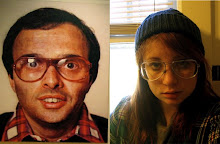I related Danky's talk to John McKinnon's talk on Andy Warhol a few weeks ago. This is because of how he spoke about his goal of bring the comic art form into galleries, and moving up how it was viewed from low to high art form. The thing that really emphasized this comparison of low and high art form for me was the juxtaposition between pictures from graphic novels and pictures of famous paintings and statues that Danky included in his slide show. I never really thought of comics as drawing from higher art forms, but I was able to see the connection when he placed the works of art next to the excerpts from the comic books. Nowadays, comics are regarded more highly than they used to be, and it is not completely uncommon to see something that looks like a comic in a museum.
Roy Lichtenstein is an example of an artist whose work is exhibited in museums, and who drew his inspiration from comics. He started this style as a comic inspired painter when his young son challenged him when looking at a Mickey Mouse comic, saying "I bet you can't draw as good as that dad!" And here is a painting displayed in Tate Modern in London that shows where he has taken his art since that statement:


although sex drugs and rock n' roll serve as inspiration for 'comixers', comix can be the inspiration as well.
ReplyDeleteI disagree that Danky's juxtapose of comics and classical art was effective in eliminating the commonly held belief that comics are 'low' art.
ReplyDeleteThe comics themselves did not really draw from 'higher art forms,' they were arbitrarily placed next to an image that shared vaguely similar subject matter.
I liked that you brought up Lichtenstein-- It made clear that artists can certainly elevate the comic form to high art. I am, however, skeptical of an archivist's ability to do the same thing.
I agree with Zach... I was not entirely convinced by Danky's argument... but it made me think about it more than I had before...
ReplyDeleteSome of the comix artists were art school products so it seems likely they were paying homage to high art in their low art. Another note, there have been a few exhibitions recently highlighting the "archive" as art and a calling into question what gets archived and what meaning is ascribed to the archive. What does it say about society, who has power and who places value and meaning on specific objects.
ReplyDelete